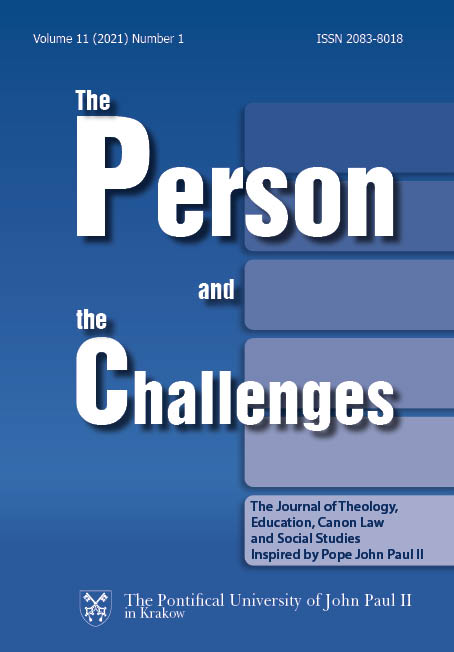The First Relationship – the Experience of Fundamental Trust as a Foundation for the Development of Faith
DOI:
https://doi.org/10.15633/pch.3889Keywords:
Newborn, observation, the first relationship, Relational Family TherapyAbstract
The article is an important starting point for reflecting upon the emergence and development of fundamental trust through the first, primary relationship between the newborn and the parent. The birth of the first child signifies establishment of a family system, in which the concepts and mechanisms that Relational Family Therapy is built upon, are reflected on a systemic, interpersonal and intrapsychic level. Relational Family Therapy can find a way to resolve painful psychical contents and bring about a relief of the family system. The starting point for the study of the family described in this paper is the method of observing newborn behavior, the Newborn Behavioral Observations System (hereinafter NBO) with elements of Relational Family Therapy, which significantly helps to build a confident parental role and establishes a closer relationship between parents and children, thus forming the foundation for all further relationships.
References
Aldridge J., & Box J., Moral and affective dimensions of childhood,in: D. Ratcliff (Ed.), Handbook of children’s religious education, Birmingham 1992: Religious Education Press.
Bollas Ch., The shadow of the object: psychoanalysis of the unthought known, Abingdon, New York (N.Y.) 2018: Routledge, Taylor & Francis Group.
Brazelton T. B., Neonatal behavioral assessment scale, London 1973: Spastics International Medical Publications.
Brazelton T. B.& Nugent J. K., Neonatal behavioral assessment scale (3 ed.), London 1995: Mac Keith Press.
Bruschweiler-Stern N., A multifocal neonatal intervention, in: A. J. Sameroff, S. C. McDonough & K. Rosenblum (Eds.), Treating parent infant relationship problems: strategies for intervention, New York 2004: Guilford Press, pp. 188–212.
Brusselmans Ch., O’Donohoe J. A., Fowler J. W., & Vergote A.,Toward moral and religious maturity, Morristown 1980: Silver Burdett Co.
Erikson E. H., Identity and the life cycle, New York 1980: W.W. Norton.
Erzar T. & Kompan E., Lia K.,Teorija navezanosti, Celje 2011: Celjska Mohorjeva družba.
Farrell Ph. & Sittlington N., The baby at birth, in: D. F. Fraser & M. A. Cooper (Eds.), Myles textbook for midwives (15 ed., pp. 745–761), Edinburgh 2009: Churchill Livingstone Elsevier.
Fowler J. W., Stages of faith: the psychology of human development and the quest for meaning, New York 1995: Harper One.
Fowler J. W., Becoming adult, becoming christian: adult development and christian faith, San Francisco 2000: Jossey-Bass Publishers.
Fowler J. W., Faith development theory and the postmodern challenges, »International Journal for the Psychology of Religion« (2001), 11 (3), pp. 159–172.
Fowler J. W., Faith development at 30: naming the challenges of faith in a new millennium, »Religious Education« (2004) 99 (4), pp. 405–421.
Gostečnik Ch., Relacijska družinska terapija (Vol. 5), Ljubljana 2004: Brat Frančišek in Frančiškanski družinski inštitut.
Gostečnik Ch., Inovativna relacijska družinska terapija: inovativni psiho-biološki model (Vol. 13), Ljubljana 2011: Brat Frančišek, Teološka fakulteta in Frančiškanski družinski inštitut.
Gostečnik Ch., Govorica telesa v psihoanalizi (Vol. 14), Ljubljana 2012: Brat Frančišek, Teološka fakulteta in Frančiškanski družinski inštitut.
Gostečnik Ch., Relacijska paradigma in klinična praksa (Vol. 15), Ljubljana 2013: Brat Frančišek in Frančiškanski družinski inštitut.
Kennell J. H., Parent-infant bonding and doula support, in: K. J. Nugent, B. J. Petrauskas & B. T. Brazelton (Eds.), The newborn as a person: enabling healthy infant development worldwide, Hoboken 2009: Wiley, pp. 243–253.
Kennell J., & McGrath S., Starting the process of mother-infant bonding, »APA Acta Pediatrica« (2005) 94(6), pp. 775–777.
Kompan E., Lia K., Ljubezen umije spomin (Vol. 8), Ljubljana 2006: Brat Frančišek, Frančiškanski družinski inštitut in Celjska Mohorjeva družba.
Lester B. M., Transforming the research landscape, in: B. M. Lester & J. D. Sparrow (Eds.), Nurturing children and families: building on the legacy of T. Berry Brazelton, Oxford, Malden 2010: Wiley-Blackwell, pp. 3–14.
Lieberman A. F. & Van Horn P., Psychotherapy with infants and young children: repairing the effects of stress and trauma on early attachment, New York 2008: Guilford Press.
Newman B. M., & Newman Ph. R., Development through life: a psychosocial approach (11 ed.) 2011: Cengage Learning.
Nugent K. J., Keefer C. H., Minear S., Johnson L. C., & Blanchard Y., Understanding newborn behavior & early relationships: the newborn behavioral observations (NBO) system handbook, London 2007: Paul H. Brookes Publishing.
Pate T., Families of Children with Chronic Illness and the Relational Family Model “The Person and the Challenges” Vol. 5 (2015) No 2, pp. 57–65.
Prijatelj E., Psihološka dinamika rasti v veri (Vol. 15), Ljubljana 2008: Slomškova založba in Teološka fakulteta.
Schore A. N., Affect regulation and the repair of the self (1 ed.), New York 2003: W.W. Norton.
Simonič B., Empathetic Parenting and Child Development, “The Person and the Challenges” Vol. 5 (2015) No 2, pp. 109–121
Skubic M., Integracija metode Newborn Behavioral Observations (NBO) z elementi relacijske družinske terapije (magistrsko delo), Univerza v Ljubljani, Teološka fakulteta 2014.
Stern D. N., The motherhood constellation: a unified view of parent-infant psychotherapy, New York 1995: Basic Books.
Stern D. N., The present moment in psychotherapy and everyday life, New York 2004: W.W. Norton, pp. 29–30.
Downloads
Published
Issue
Section
License
Authors who publish with this journal agree to the following terms:
- Authors retain the copyright and full publishing rights without restrictions, and grant the journal right of first publication with the work simultaneously licensed under a Creative Commons Attribution 4.0 International License that allows others to share the work with an acknowledgement of the work's authorship and initial publication in this journal.
- Authors are able to enter into separate, additional contractual arrangements for the non-exclusive distribution of the journal's published version of the work (e.g., post it to an institutional repository or publish it in a book), with an acknowledgement of its initial publication in this journal.
- Authors are permitted and encouraged to post their work online (e.g., in institutional repositories or on their website) prior to and during the submission process, as it can lead to productive exchanges, as well as earlier and greater citation of published work (See The Effect of Open Access).

